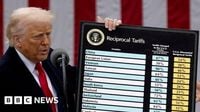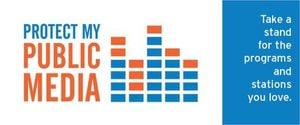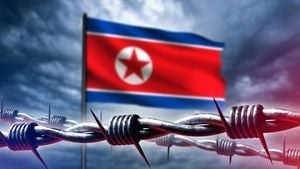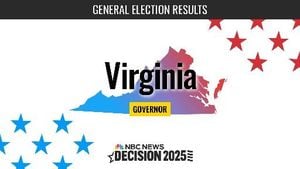The United States Supreme Court convened on November 5, 2025, to grapple with a legal battle that could redefine presidential power and reshape the nation’s approach to international trade. At stake is President Donald Trump’s sweeping global tariffs program, enacted under the 1977 International Emergency Economic Powers Act (IEEPA) after the president declared a series of emergencies related to illegal immigration, drug trafficking, and persistent trade deficits. The case, which Trump himself has called “one of the most important cases in the history of our country,” pits the White House against a coalition of small businesses, Democratic-led states, and a bipartisan group of lawmakers, all questioning whether the president truly holds unfettered authority to impose tariffs without explicit congressional approval.
Arguments before the justices unfolded in dramatic fashion, with the courtroom filled by legal teams, business leaders, and a press corps eager for clues about the Court’s leanings. The central question: Does the IEEPA grant the president the power to set tariffs on any country, at any rate, and for as long as he deems necessary, simply by declaring an emergency? Solicitor General John Sauer, representing the administration, insisted that the tariffs are “regulatory” rather than revenue-raising, arguing, “We don't contend that what's being exercised here is the power to tax, it's the power to regulate foreign commerce. These are regulatory tariffs, they are not revenue-raising tariffs. The fact that they raise revenue is only incidental.”
But the justices, including several conservatives, pressed Sauer to explain how this authority squares with the Constitution’s explicit assignment of taxing power to Congress. Chief Justice John Roberts, often seen as a pivotal vote, challenged the administration’s view, stating, “The vehicle is the imposition of taxes on Americans. That has always been the core power of Congress.” He later summarized the plaintiffs’ argument, suggesting that the tariffs “reach into the pockets of the American people” just like a tax. Roberts added pointedly, “The power to reach into the pockets of the American people is just different.”
Justice Neil Gorsuch echoed concerns about executive overreach, warning that the administration’s interpretation risked a “one-way ratchet toward the gradual but continual accretion of power in the executive branch and away from the people’s elected representatives.” Gorsuch even mused whether a future president might invoke a climate change emergency to impose similar tariffs, highlighting the precedent the Court’s decision could set. Sauer replied, “It's very likely that can be done. ... This administration would say that's a hoax. It's not a real crisis.” Gorsuch quipped in response, “I am sure you would.”
Justice Samuel Alito, meanwhile, appeared more sympathetic to the administration’s argument, noting that emergency statutes are often written in broad terms. “Wouldn't you agree that statutes that confer on the president real emergency powers are often phrased much more broadly than other statutes? Isn't it the very nature of an emergency?” he asked Neal Katyal, who argued on behalf of the challengers. Alito acknowledged the dispute over whether the circumstances Trump cited truly constitute an emergency.
For small businesses and consumers, the stakes are immediate and personal. According to BBC News, Learning Resources, a toy manufacturer based in Illinois and one of the plaintiffs, faced a crushing $14 million in tariffs in 2025—seven times what it paid in 2024. CEO Rick Woldenberg lamented, “They've thrown our business into unbelievable disruption,” explaining that the company was forced to shift manufacturing for hundreds of products. “We paid $2.3 million in tariffs in 2024,” he said. “Based on our 2025 budget, we would have paid $100 million in tariffs at Trump’s 145% rate on China. It’s receded a little bit from there, but it’s still a very disruptive expense that we can’t bear on our own.”
Other business owners echoed the sense of upheaval. Bill Harris, co-founder of Georgia-based Cooperative Coffees, told BBC News his company has already paid $1.3 million in tariffs since April and has had to take out extra credit, raise prices, and operate on thinner margins. “This is an energy drain like I've never seen,” Harris said. “It dominates all the conversations and it just kind of sucks the life out of you.”
The financial consequences ripple far beyond American borders. In Switzerland, Daniel Bloch, CEO of Chocolats Camille Bloch, described how the U.S. tariffs wiped out profits for his company’s kosher chocolate exports. “If the court were to make the tariffs go away of course we would see that as a positive sign,” Bloch said. “But we don't trust that that will bring the solution.” Even the European Union’s trade deal with the U.S. has been put on hold, pending the Court’s decision, as European lawmakers weigh the impact of the tariffs on their own economies.
The legal arguments turn on whether the IEEPA’s broad language truly allows the president to bypass Congress in setting tariffs. Opponents—including more than 200 Democratic lawmakers and one Republican senator, Lisa Murkowski—filed briefs asserting that only Congress has the constitutional authority to levy taxes and duties. In late October, the Senate passed bipartisan resolutions rejecting Trump’s tariffs and emergency declarations, though the House is unlikely to advance them further. “Congress, not the president, decides whether and how much to tax Americans who import goods from abroad,” the states wrote in their legal brief. “This Court should reject the president’s bid to seize that power for himself.”
Lower courts have largely sided with the challengers. The Court of International Trade, the U.S. Court of Appeals for the Federal Circuit, and a federal district court in Washington, D.C., all ruled against the administration, with the Court of International Trade specifically finding that the dangers cited by Trump did not constitute an “unusual and extraordinary threat.” However, the tariffs remain in effect until the Supreme Court’s final word.
Should the justices strike down the tariffs, the U.S. government might face tens of billions—potentially up to $90 billion—in refunds to businesses, according to estimates cited by Wells Fargo analysts. Justice Amy Coney Barrett asked Katyal about the practicalities of reimbursement, noting, “If you win, tell me how the reimbursement process would work. Would it be a complete mess?” Katyal admitted, “There's got to be an administrative protest... The refund process took a long time for any number of claims.” Barrett summarized, “So, a mess.”
Yet even if the Court rules against Trump’s use of IEEPA, the White House could still impose some tariffs under other statutes, such as the Trade Expansion Act of 1962 or the Trade Act of 1974, though these require more formal processes and have stricter limits. As trade lawyer Ted Murphy explained to BBC News, “This is not just about the money. The president has announced tariffs on Sunday that go into effect on Wednesday, without advance notice, without any real process. I think that's the bigger thing for this case for businesses—whether or not that is going to be in our future.”
For now, the Supreme Court’s conservative majority faces a delicate balance. Historically, the Court has deferred to the executive branch on foreign affairs and national security, but it has also blocked major domestic initiatives—such as pandemic-era eviction moratoriums and student loan forgiveness—when they lacked clear congressional backing. As Jonathan Adler of William & Mary Law School put it, “If they see it as a foreign affairs case, the administration wins. If they see it as a textual interpretation case, they lose.”
The justices are expected to issue a ruling before the end of June 2026, a decision that will reverberate through the corridors of power in Washington, boardrooms across the country, and trading partners around the globe. For many, the outcome will determine not only the fate of billions in tariffs but also the delicate balance between presidential authority and congressional oversight in America’s economic life.






